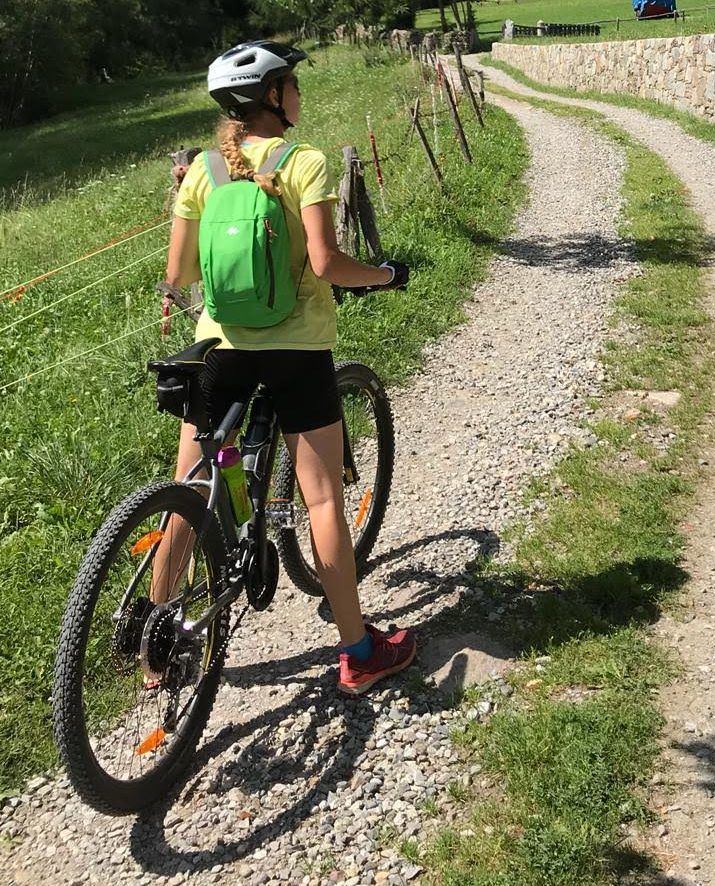Some practical notions

In my blog I address cyclists of all levels, from beginners, children and adults, to those who are already more experienced and are interested in discovering new enduro routes in the territory of Biella.
Therefore, if you already know the basics of MTB, I recommend going directly to the specific sections: First Aid Kit, Repair Kit and Check List.
If you are approaching this kind of sport for the first time, the tips I am about to give you could be useful to have fun and live your experience on the bike to the fullest!
1) Prepare your itinerary in advance
Especially if you plan to take the car and move until you reach the starting point of a route, it is crucial to know exactly where you will go, how long the route will be and how far you plan to stay away.
Don’t forget to check the weather forecast, especially if you’re about to make an itinerary in the mountains, where the sky will darkly and, especially in summer, can bring sudden thunderstorms.
2) Never run out of energy
Whether the tour lasts 1 hour or 4 hours, I always bring at least one spare energy bar, just in case.
If you are with a group or have the whole day available, it might be a great idea to prepare a packed lunch. In my itineraries I always indicate if there are some food shops and you can view on the map the picnic areas, when present.
If you plan to ride in quite high temperatures or take a route with a lot of climb (or still, you are not particularly trained), you could add mineral salts or an energy drink to your water bottle.
3) Prepare your backpack by following a check list
You can follow my Check Lists or create your own, the important thing is that you don’t forget what you need for your bike ride!
Also remember to take the paper map or a device to read the GPS track and check that each electronic tool (including your mobile phone) is well loaded.
Survival pearls:
In winter, low temperatures can quickly drain the batteries of electronic devices. You can partially recover the charge by extracting the battery and putting it in contact with your body for a few minutes to heat it.
4) Check your bike
Our bicycle should always be maintained with care, to allow it a longer life and without ailments. A dirty frame is the one that perhaps jumps the most to the eye, but it is the gears that need the most attention. The chain must always be clean and oiled. Change derailers and brake pads always free of dirt. Brakes are especially important, so always check that the pads are not worn beyond the limit. The tyres should always have a pressure of about 2 atm, but this can possibly be increased if you take a route on asphalt or decreased if you make off-road challenging.
5) Some technical tips to have fun in MTB
- The saddle must be adjusted so that it is always comfortable for pedalling and can be tested by placing yourself next to the bike and getting the saddle to the height of the pelvis. Once seated, the leg should be almost stretched on the pedal. However, it is a good habit to change this height according to the stretch of route: uphill, the saddle must be raised until you have the most tense leg possible (to make less effort); in steep descents it must instead be lowered to the maximum, to allow us to move the weight of the body back and lower the center of gravity.
- When tackling bumps or bumpy paths, you can lift from the saddle while keeping your knees slightly bent to cushion the jumps.
- On the handlebars, on the left we find the front brake lever and the adjustment of the front gearbox; on the right, we find the levers of the rear brake and gearbox. In general, you have to brake mainly with the rear brake, to avoid that by braking with the front bike you nail sharply (the disc brakes have very sensitive “reflections”).
- If you are travelling on busy roads, you must maintain a single row and indicate with your arm the direction you intend to take at crossroads and roundabouts.
